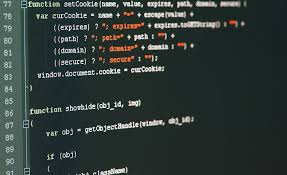Programming functions are an essential component of software development. They enable users to execute a specific block of code that performs a particular task and returns values. However, before exploring the different examples of programming functions, it is crucial to understand their purpose and definition.
Function Definition and Terminology
In programming, a function can be defined as a procedure that accepts input arguments and returns an output value. Some programming languages refer to functions as procedures, while others use the term to describe code blocks. The C programming language is unique in using the keyword “function” to define functions. Functions are typically maintained separately from the main program code and have restrictions.
Single-line vs. Multi-line Functions
Functions can appear in either a single or multiple lines, depending on their complexity. A single-line function returns a value after completing a specific task in one line. On the other hand, multi-line functions spread over several lines.
Examples of Programming Functions
One of the most common examples of a programming function is a mathematical function, such as log and tan. Other popular types of functions include string functions and date functions.
The Benefits of Using Programming Functions
Using programming functions can save time and effort by assigning values and calculating results automatically. This feature is especially useful for complex calculations or repetitive tasks.
When declaring or calling a function with multiple parameters in PHP, commas are used to separate the parameters. Here is an example function declaration:
function print_two_strings($var1, $var2)
{
echo $var1;
echo "\n";
echo $var2;
return NULL;
}
To call this function, values must be assigned to the parameters, like this:
print_two_strings("hi", "guys");
This will produce the output:
hi
guys
PHP provides other built-in functions, such as func_get_args, func_get_arg, and func_num_args, which allow for dynamic parameter handling. For example:
// Mean: 27
Functions are best when they return some value or information. They can perform calculations and indicate any errors that occur. To return a value from a function, the return statement is used. For example:
{
$var4 = $var1 + $var2 + $var3;
return $var4;
}
echo “The result of 2+4+6 is {$sum}”;
The output of this script is:
The result of 2+4+6 is 12.
If a function needs to return multiple variables, they should be returned as a group rather than a single variable. Here is an example:
function maths($input1, $input2)
{
$total = ($input1 + $input2);
$difference = ($input1 - $input2);
$ret = array("tot"=>$total, "diff"=>$difference);
return $ret;
}
There are also ways to access functions without using the function name or curly braces, such as call_user_func and call_user_func_array. Here is an example:
$one = "One";
$two = "Two";
$three = "Three";
$callback_func = "my_function";
$result = call_user_func_array($callback_func,array($one,$two,$three));
echo $result;
While the symbols used in programming may appear confusing, they serve to simplify tasks and make coding easier.

